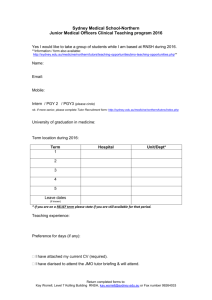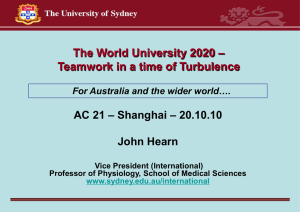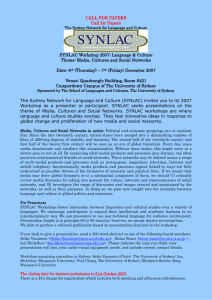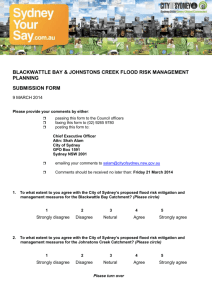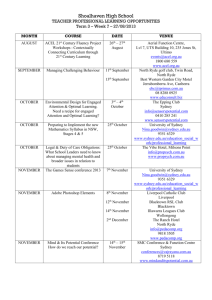1 Human Heart Tissue Bank Facility The purpose of the Human
advertisement
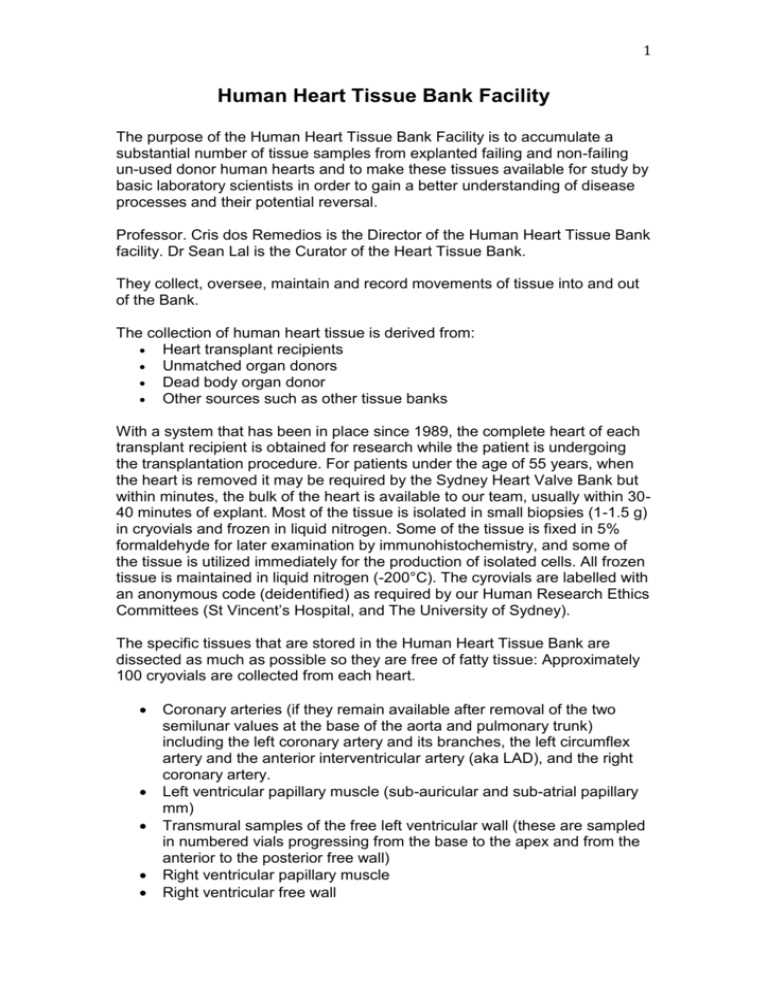
1 Human Heart Tissue Bank Facility The purpose of the Human Heart Tissue Bank Facility is to accumulate a substantial number of tissue samples from explanted failing and non-failing un-used donor human hearts and to make these tissues available for study by basic laboratory scientists in order to gain a better understanding of disease processes and their potential reversal. Professor. Cris dos Remedios is the Director of the Human Heart Tissue Bank facility. Dr Sean Lal is the Curator of the Heart Tissue Bank. They collect, oversee, maintain and record movements of tissue into and out of the Bank. The collection of human heart tissue is derived from: Heart transplant recipients Unmatched organ donors Dead body organ donor Other sources such as other tissue banks With a system that has been in place since 1989, the complete heart of each transplant recipient is obtained for research while the patient is undergoing the transplantation procedure. For patients under the age of 55 years, when the heart is removed it may be required by the Sydney Heart Valve Bank but within minutes, the bulk of the heart is available to our team, usually within 3040 minutes of explant. Most of the tissue is isolated in small biopsies (1-1.5 g) in cryovials and frozen in liquid nitrogen. Some of the tissue is fixed in 5% formaldehyde for later examination by immunohistochemistry, and some of the tissue is utilized immediately for the production of isolated cells. All frozen tissue is maintained in liquid nitrogen (-200°C). The cyrovials are labelled with an anonymous code (deidentified) as required by our Human Research Ethics Committees (St Vincent’s Hospital, and The University of Sydney). The specific tissues that are stored in the Human Heart Tissue Bank are dissected as much as possible so they are free of fatty tissue: Approximately 100 cryovials are collected from each heart. Coronary arteries (if they remain available after removal of the two semilunar values at the base of the aorta and pulmonary trunk) including the left coronary artery and its branches, the left circumflex artery and the anterior interventricular artery (aka LAD), and the right coronary artery. Left ventricular papillary muscle (sub-auricular and sub-atrial papillary mm) Transmural samples of the free left ventricular wall (these are sampled in numbered vials progressing from the base to the apex and from the anterior to the posterior free wall) Right ventricular papillary muscle Right ventricular free wall 2 Interventricular septum Right atrium (often with the crista terminalis and musculi pectinati identified) Left atrium Ascending aorta (infrequently) Human skeletal muscle (psoas) used as a control for non-cardiac striated muscle. In the case of heart tissues that were potential but un-used donors, the hearts are perfused with chilled cardioplegic solution and transported to the Human Heart Tissue Bank within 2-4 hours of removal of the heart. The Human Heart Tissue Bank currently contains over 550 hearts of which about 100 hearts are from non-failing organ donors. No tissue is used for research purposes unless a member of the research team from the Human Heart Tissue Bank has sighted the patient consent form indicating consent for the use of heart tissue for research. Usually a copy of this consent form is made at the time of collection. At The University of Sydney, all human heart tissue is processed in the PC2 facility of the Bosch Institute. Standard operating procedures for PC2 facilities apply. Each cryovial is labelled with a four-digit patient code that bears no relationship to the patients’ medical record number, nor does a vial label ever indicate the date of birth or name of the patient. All users of the above tissue are required to have HREC approval from their home institute and they must provide a short (<1 page) description of their research program and list the name and contact details of the principal investigator. Any changes in these details require notification to the Human Heart Tissue Bank facility. HREC approvals are obtained and updated at the HREC Office at St Vincent’s Hospital, Darlinghurst, and at the HREC Office at the University. The end users who are approved by the above two bodies are expected to publish their findings and to inform the Human Heart Tissue Bank the four digit codes of the samples they used in their study. Once a publication is accepted, patient code information is sent to the users of the Bank so they are informed about specific scientific findings that may assist them in their research programs. Patient information is de-identified and appropriate and relevant clinical data are recorded. As of July 2010, approximately 20,000 tissue vials are stored in the bank. For enquires concerning this tissue, contact the Director 3 Professor Cristobal G dos Remedios Bosch Institute, Sydney Medical School Department of Anatomy and Histology The University of Sydney Sydney 2006, Australia. Phone +61 2 93513209 Mob: 0413 482738 Fax: +61293516547 Email: cris.dosremedios@sydney.edu.au Or the Curator of the Human Heart Tissue Bank Dr Sean Lal Sydney Medical School Department of Anatomy and Histology The University of Sydney Sydney 2006, Australia. Phone +61 2 93513266 Mob: 0411549799 Fax: +61293516547 Email: sean@anatomy.usyd.edu.au Updated July 30, 2010.
